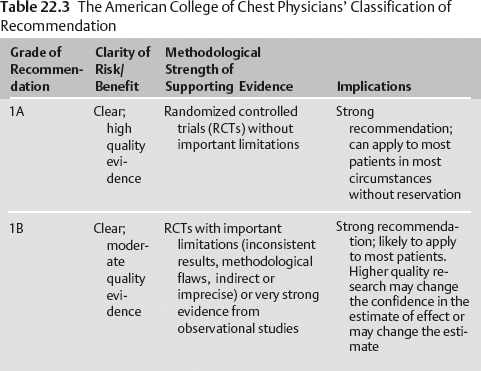22 Grades of Recommendations Based on Level of Evidence Jennifer A. Frontera
| Class I | Evidence provided by a prospective study of a broad spectrum of persons who may be at risk for developing the outcome (e.g., target disease, work status). The study measures the predictive ability using an independent gold standard for case definition. The predictor is measured in an evaluation that is masked to clinical presentation, and the outcome is measured in an evaluation that is masked to the presence of the predictor. All patients have the predictor and outcome variables measured. |
| Class II | Evidence provided by a prospective study of a narrow spectrum of persons at risk for having the condition, or by a retrospective study of a broad spectrum of persons with the condition compared with a broad spectrum of controls. The study measures the prognostic accuracy of the risk factor using an acceptable independent gold standard for case definition. The risk factor is measured in an evaluation that is masked to the outcome. |
| Class III | Evidence provided by a retrospective study where either the persons with the condition or the controls are of narrow spectrum. The study measures the predictive ability using an acceptable independent gold standard for case definition. The outcome, if not objective, is determined by someone other than the person who measured the predictor. |
| Class IV | Any design where the predictor is not applied in an independent evaluation OR evidence provided by expert opinion or case series without controls. |
Data from: Wijdicks EF, Hijdra A, Young GB, Bassetti CL, Wiebe S. Practice parameter: prediction of outcome in comatose survivors after cardiopulmonary resuscitation (an evidence-based review): report of the Quality Standards Subcommittee of the American Academy of Neurology. Neurology 2006;67(2):203–210.
| A | Established as effective, ineffective, or harmful for the given condition in the specified population. (Level A rating requires at least two consistent class I studies.) |
| B | Probably effective, ineffective, or harmful for the given condition in the specified population. (Level B rating requires at least one class I study or at least two consistent class II studies.) |
| C | Possibly effective, ineffective, or harmful for the given condition in the specified population. (Level C rating requires at least one class II study or two consistent class III studies.) |
| U | Data inadequate or conflicting; given current knowledge, predictor is unproven |
Data from: Wijdicks EF, Hijdra A, Young GB, Bassetti CL, Wiebe S. Practice parameter: prediction of outcome in comatose survivors after cardiopulmonary resuscitation (an evidence-based review): report of the Quality Standards Subcommittee of the American Academy of Neurology. Neurology 2006;67(2):203–210.
Stay updated, free articles. Join our Telegram channel

Full access? Get Clinical Tree









